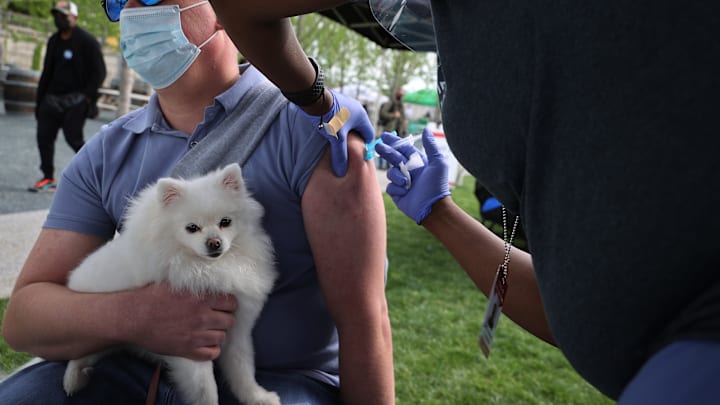Life is more challenging for people diagnosed with a mental health condition like social anxiety, depression or PTSD. Aside from consultations and medications, having emotional support animals can provide the relief and comfort they need. Are you wondering how to get an emotional support animal in 2024? Discover the step-by-step process of acquiring an animal companion.
What are Emotional Support Animals?
Although all pets can form a bond with their owners, an emotional support animal (ESA) is a licensed mental health-prescribed pet to help a person with a disabling emotional or mental problem. A psychologist, therapist or psychiatrist should determine and recommend the need for a support animal.
These animals provide support that helps alleviate one or more symptoms of their handler’s disability. They provide constant companionship and help relieve certain phobias, anxiety and depression.
Emotional Support Animals vs. Service Animals
An emotional support animal only provides companionship to help relieve signs of debilitating mental and emotional problems. They differ from service animals, like psychiatric service or guide dogs, which are trained to perform tasks to assist people with disabilities. Additionally, an ESA can be any domesticated animal, but service animals can only be miniature horses and dogs.
The significant difference between these two is whether the animal has been trained to perform a list of tasks related to a person’s disability. For instance, a guide dog underwent training to help a person with visual impairment while walking on the streets. A psychiatric service dog can remind an individual to take medications.
Meanwhile, emotional support animals like dogs don’t require extensive training. Their presence helps people cope and not perform daily tasks. The laws also don’t need them to wear specific harnesses and clothing like service animals.
Which Animals Can Provide Emotional Support?
Any domestic animal can qualify as an ESA. They are usually dogs and cats but may also be rabbits, birds, rats, mini pigs, goats and ferrets. Since they aren’t required to perform specific tasks, they can come in various ages and sizes. The only requirement is that your companion should be trained and manageable in public and at home.
How to Get an Emotional Support Animal in 2024
Whether you need companionship or a loved one needs help navigating feelings of loneliness, here’s a step-by-step guide to help you obtain an emotional support animal this year.
1. Visit a Mental Health Professional
First, you need to consult a licensed mental health professional who will assess your condition and your need for an ESA. You can choose between attending virtual or face-to-face consultations at your convenience. However, an in-person visit may be appropriate for you if you want to have your child checked. Remember to be candid—share your worries, thoughts and feelings with the professional so that they can accurately assess your condition.
When it comes to your child or baby, explain your concerns clearly. For instance, if your little one has a disability or separation anxiety, a physician might suggest getting an emotional support dog. A pup’s presence helps give a newborn a sense of security at night, ensuring they get around 14 and 17 hours of rest over 24 hours. A dog can also provide cognitive support to a child as they grow up.
2. Get an Emotional Support Animal Letter
An ESA letter is a document stating your need for assistance animal. Like a medical prescription, you’ll need it before acquiring your emotional support animal. The letter should indicate your name, information about your mental health condition, the benefits of an ESA, and the licensed professional’s name and contact information.
3. Choose the Perfect Animal Companion
Once qualified to get an ESA, research and choose the ideal companion to support your emotional needs. Take time to know an animal’s needs and ensure you have enough resources and space at home to accommodate it.
Dogs and cats are common choices but feel free to explore other options, like a goat, bird or rabbit. This 2024, you can get an emotional support animal from a shelter, purchase one from pet stores or obtain an adorable pup from your loved ones or neighbors.
4. Give Proper Training
While your ESA doesn’t require rigorous training as a service animal, you must ensure your emotional support animal is well-behaved in public areas. Provide basic obedience training to make your animal companion and people around you more comfortable.
Where Can You Bring Your ESA?
Your animal companion is welcome to enter a housing facility with a no-pet policy, provided that you show your ESA letter to the landlord. They are also allowed on school premises. However, some academic institutions may have additional requirements, such as documentation of veterinarian visits, vaccinations and the length of time that you have been a patient of your licensed mental health professional.
Many airlines allow ESAs to fly with handlers inside the cabin or cargo, depending on their policies. For instance, an airline might allow you to pass with your animal companion, provided you have proper documentation from your mental health provider. However, not all airlines are ESA-friendly. Southwest Airlines is among the companies that banned ESAs from their airplanes due to complaints about untrained animals on board.
Enjoy the Benefits of Having an ESA
An emotional support animal is not for everyone. You need to have a diagnosed mental or emotional condition and a valid ESA letter. If you already have this document from your licensed mental health professional, remember to choose the best animal that will provide you with the best companionship possible.
